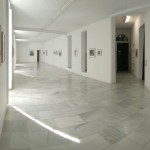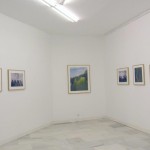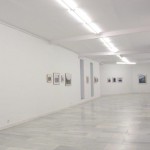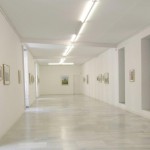ERIC BAUDELAIRE (Salt-Lake-City, EEUU, 1973)
From April 1 to May 15, 2017
FÛKEIRON
Eric Baudelaire
Galería Juana de Aizpuru
April 1st to May 15th
Fûkei means landscape in Japanese. Fûkeiron is a proposition: turn the camera 180 degrees to film not the subject of the film, but rather the landscapes that he has seen. Film the clinic where the subject was born in the Parisian suburb of Vitry, the buildings he grew up in, his high school and workplaces. Then, film the landscapes of his departure: Egypt, Turkey and the road to Aleppo where he joined the ranks of the al Nusra Front in 2012. And then film his path home.
Eric Baudelaire’s new feature film, Also Known as Jihadi, is a possible story of a man told through the places he traversed. A series of landscapes contextualized by extracts of judicial documents: police interrogations, wiretaps, surveillance reports… Together, they form a new kind of genre film, a slow legal thriller that translates the filmmaker’s sense of loss in the face of the incomprehensible, a feeling coupled by the intuition that the incomprehensible must nonetheless have its reasons. The idea of fûkeiron (“landscape-theory” in Japanese) was developed by Japanese avant-garde filmmaker Masao Adachi, who was the subject of Eric Baudelaire’s film The Anabasis… presented at Galería Juana de Aizpuru in 2012. Also Known as Jihadi is a new interpretation of the so-called landscape theory, inspired by Adachi’s 1969 film AKA Serial Killer.
The political significance of landscape has been a longstanding preoccupation in Eric Baudelaire’s work, both as a photographer and filmmaker. The ambiguous status of the unrecognized secessionist territory of Abkhazia was the subject of Baudelaire’s early photographic landscape works titled Imagined States. Later, these same landscapes became central to his film Letters to Max, recently exhibited at Museo Reina Sofía in the ‘Territories and Fictions’ exhibition.
When Baudelaire was editing Also Known as Jihadi, he began to look back at his very last photographic project from 2007, a series he made shortly before devoting himself entirely to film and installation work. The piece, titled Site Displacement / Déplacement de Site, is a series of 22 photographic diptychs shot in France and in India in a strange mirroring game that proposes a conceptual reflection on landscape, photography, de-territorialized industry and globalization. Shown for the first time in 10 years, fifteen photographic diptychs from the series are presented in the Fûkeiron exhibition at the gallery.
The following artist statement introduces the work:
In August 2006, I accepted a commission from Clermont-Ferrand, an industrial city in France, to produce a photographic work on the notion of « territory ».
After four weeklong stays, I selected twenty-two images made in and around Clermont-Ferrand.
In August 2007, I hired an Indian photographer, Anay Mann, to supply me with a second set of pictures comprised of photographs re-made in India « after » each one of my pictures from Clermont-Ferrand.
« Site Displacement / Déplacement de Site » combines these two sets of pictures in an installation.
Eric Baudelaire
 Español
Español  English
English 


